A microscope is a crucial instrument in science, enhancing visibility of tiny objects. It consists of optical and mechanical components working together to magnify specimens. Understanding its parts and functions is essential for effective use in research and education.
Structural Components of a Microscope
The microscope’s structure includes the head, base, and arm. The head contains optical parts, while the base provides stability. The arm connects the head to the base, ensuring proper alignment and support.
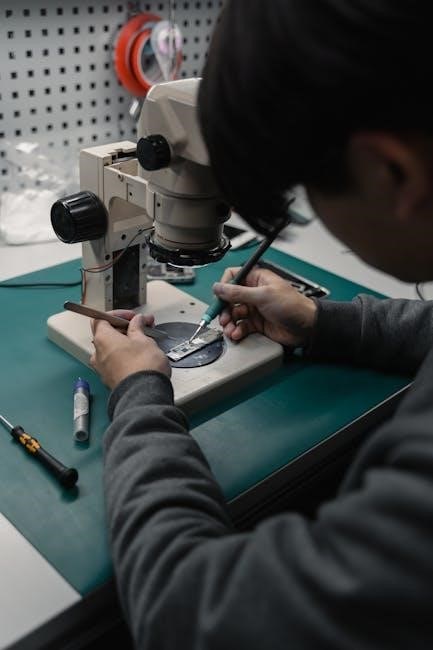
2.1. The Head
The head of a microscope is the uppermost part housing essential optical components. It contains the eyepiece, objective lenses, and the body tube. The eyepiece, or ocular lens, is used for viewing the specimen, while the objective lenses are positioned at the lower end of the body tube to focus light from the specimen. The head is designed to rotate, allowing easy switching between different objective lenses. Proper alignment of the head’s components is crucial for clear and accurate observation. The head also supports the diopter adjustment, which fine-tunes the focus for each eye. This structure ensures that the optical path remains precise, enabling high-resolution imaging. Regular maintenance of the head, such as cleaning the lenses, is necessary to preserve image quality. Overall, the head is a critical component that directly impacts the microscope’s performance and functionality.
2.2. The Base
The base is the stable foundation of the microscope, providing support and housing key functional components. It is designed to be durable and heavy to maintain balance and prevent vibrations. The base contains the light source, which is essential for illuminating the specimen. In many microscopes, the base also includes the power supply and controls for adjusting the light intensity. Some bases feature a built-in diaphragm, which regulates the amount of light passing through the stage. The base connects to the arm and supports the entire structure, ensuring stability during use. Proper construction of the base is critical for maintaining the microscope’s optical accuracy and operational efficiency. Regular cleaning and maintenance of the base, especially the light source and electrical components, are important for optimal performance. The base serves as the backbone of the microscope, integrating functionality and stability to enable precise observations.
2.3. The Arm
The arm is a vital structural component of the microscope, connecting the base to the head. It provides stability and support for the entire instrument. Typically made of durable materials like metal, the arm ensures the microscope remains balanced and secure during use. One of its key features is the coarse adjustment knob, located on the arm, which allows users to move the stage up and down for initial focusing. The arm also houses the vertical column, which supports the head and stage, ensuring smooth and precise movement. Its robust design minimizes vibrations and wobble, maintaining optical clarity. The arm plays a crucial role in maintaining the integrity of the microscope’s structure, enabling accurate and reliable observations. Proper care and maintenance of the arm are essential to prolong the microscope’s lifespan and performance.
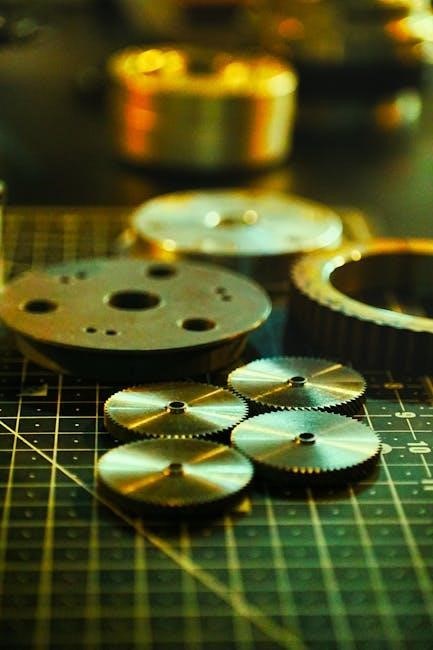
Optical Components
Optical components are essential for a microscope’s functionality. They include the eyepiece and objective lenses, which work together to magnify specimens. The eyepiece enlarges the image produced by the objective lens, enhancing visibility. Proper alignment ensures clear and precise observations.

3.1. Eyepiece (Ocular Lens)
The eyepiece, or ocular lens, is a critical optical component located at the top of the microscope. Its primary function is to further magnify the image produced by the objective lens, allowing for a more detailed view of the specimen. Typically, eyepieces are interchangeable and come in various magnifications, such as 10x or 15x. They are designed to work in conjunction with the objective lenses to achieve the total magnification power of the microscope. Proper alignment and cleanliness of the eyepiece are essential for clear and accurate observations. Additionally, some microscopes feature eyepieces with adjustable focus to accommodate individual eye differences, ensuring comfort and optimal viewing for users. Regular maintenance of the eyepiece ensures longevity and performance, making it a vital part of the microscope’s optical system.
3.2. Objective Lenses
Objective lenses are a fundamental part of a microscope’s optical system, located near the specimen stage. Their primary function is to collect light from the specimen and form a magnified image. These lenses are available in various magnifications, such as 4x, 10x, or 40x, and are selected based on the desired level of detail. Objective lenses are responsible for focusing the light rays, creating the initial magnified image that the eyepiece further enhances. They are typically mounted on a rotating nosepiece, allowing easy switching between different magnifications. Proper alignment and cleanliness of objective lenses are crucial for clear observations. High-quality objective lenses are designed to minimize optical aberrations, ensuring sharp and accurate images. Regular maintenance, such as cleaning and storing them correctly, prolongs their efficiency. Objective lenses play a pivotal role in achieving precise and detailed microscopy, making them indispensable for scientific and educational applications.

Focusing Mechanism
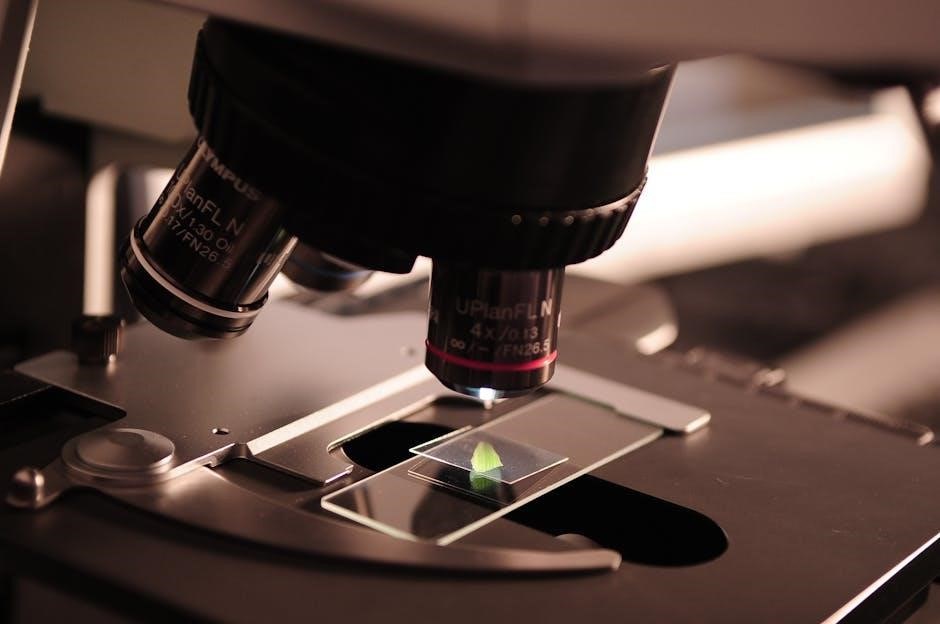
The focusing mechanism adjusts the distance between the objective lens and the specimen. It ensures precise focus for clear observations and protects the microscope from damage during adjustments.
4.1. Coarse Adjustment Knob
The coarse adjustment knob is a fundamental component of the focusing mechanism in a microscope. Located on the arm, it allows users to move the stage up and down rapidly, bringing the specimen into approximate focus. This knob is essential for initial specimen alignment and is typically used when switching between objective lenses. Its primary function is to provide a quick and efficient way to move the stage closer to or farther from the objective lens, facilitating the initial focusing process. Proper use of the coarse adjustment knob prevents damage to the microscope and ensures optimal specimen observation. It is crucial to handle this knob with care, as excessive force can lead to mechanical damage or misalignment of the microscope’s components. Regular maintenance of this knob is recommended to ensure smooth operation and longevity of the microscope.
4.2. Fine Adjustment Knob
The fine adjustment knob is a critical component of the microscope’s focusing mechanism, designed for precise adjustments. Located near the coarse adjustment knob, it allows for minute movements of the stage, enabling sharp focus on the specimen. Unlike the coarse adjustment, which provides larger movements, the fine adjustment knob offers a more delicate control, ensuring the image remains clear and well-defined. This knob is particularly useful when working with higher magnification objective lenses, where even slight movements can significantly affect image clarity. Proper use of the fine adjustment knob is essential to avoid over-adjusting, which can lead to loss of focus or specimen drift. It works in tandem with the coarse adjustment to achieve optimal focus, making it an indispensable tool for detailed observations. Regular maintenance of this knob ensures smooth operation and accurate focus control.
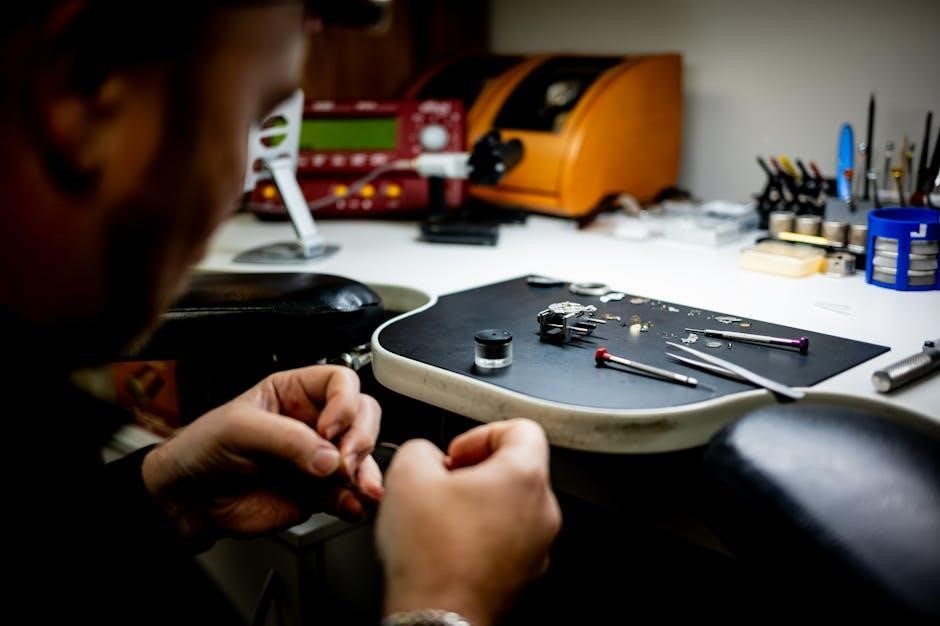
Illumination and Light Management
Proper illumination is essential for clear observation under a microscope. The light source provides the necessary brightness, while the diaphragm regulates light intensity, ensuring optimal visibility and reducing glare for accurate specimen analysis.
5.1. Light Source
The light source is a critical component of a microscope, providing the illumination necessary for observing specimens. Typically, it is positioned beneath the stage and consists of a built-in bulb or an external light source. The light source emits a focused beam of light that passes through the condenser and onto the specimen. Proper alignment of the light source ensures even illumination, which is essential for clear and accurate observation. Some microscopes feature adjustable light sources, allowing users to control brightness levels to suit different specimens and lighting conditions. This adjustability helps in optimizing image quality by reducing glare and enhancing contrast. Modern microscopes may also incorporate LED lights for energy efficiency and longer lifespan. The light source plays a pivotal role in the overall functionality of the microscope, making it indispensable for effective specimen analysis.
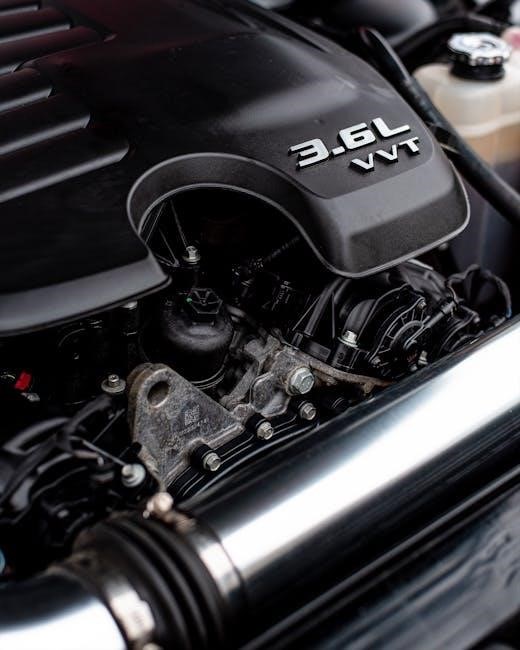
5.2. Diaphragm
The diaphragm is a crucial component in a microscope, located beneath the stage and directly above the light source. Its primary function is to regulate the amount of light passing through the specimen; By adjusting the diaphragm, users can control the intensity of light, ensuring optimal illumination for clear observation. The diaphragm typically consists of a rotating disk with different-sized apertures, allowing for precise light modulation. Proper alignment of the diaphragm with the light source is essential for even illumination. Adjusting the diaphragm helps achieve the right balance between light intensity and resolution, enhancing image quality. It also plays a role in managing the numerical aperture, which affects the microscope’s resolving power. The diaphragm is indispensable for maintaining focus and clarity, making it a key element in the microscope’s illumination system. Its correct use is vital for obtaining accurate and detailed views of specimens.
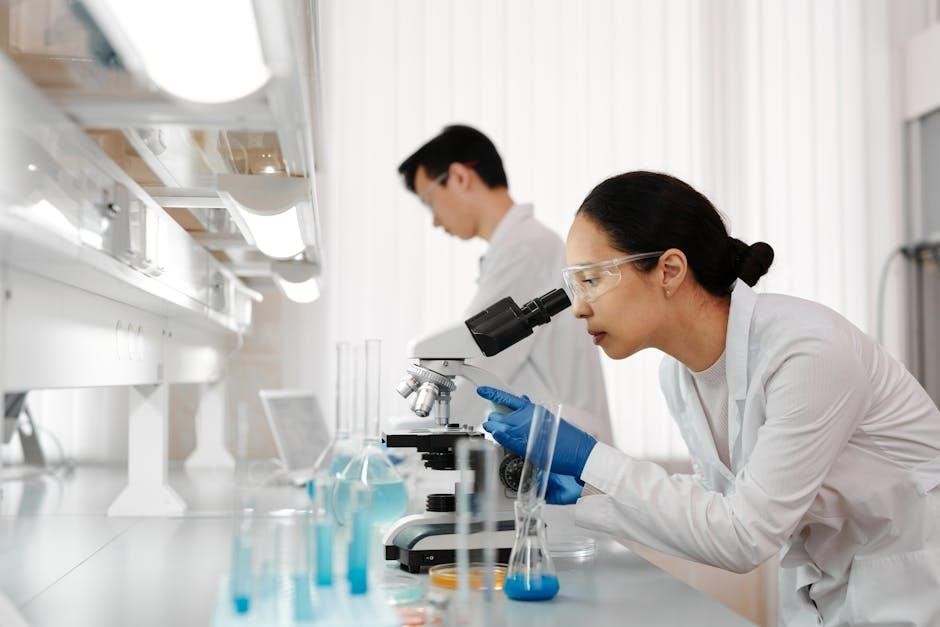
Stage and Its Components
The stage is a platform that holds the specimen in place for observation. It typically includes clips to secure slides and may feature mechanical controls for precise specimen positioning under the objective lens.
6.1. Stage Clips
Stage clips are essential components of the microscope stage, designed to securely hold the specimen slide in place during observation. Typically made of metal, these clips apply gentle yet firm pressure to prevent the slide from moving. This ensures that the specimen remains stationary, allowing for clear and precise focus. The clips are usually adjustable, enabling them to accommodate slides of varying thickness. Additionally, they are often spring-loaded, making it easy to insert and remove slides without damaging them. Proper use of stage clips is crucial for maintaining the integrity of the specimen and ensuring accurate observations. They are an integral part of the microscope’s functionality, contributing to the overall efficiency of the instrument in both educational and professional settings. By keeping the slide firmly in position, stage clips play a vital role in the successful operation of the microscope.

The microscope remains a cornerstone of scientific exploration, enabling detailed observations of microscopic structures. Understanding its parts and functions is vital for maximizing its potential in various fields. Advances in technology are continuously enhancing microscope capabilities, such as improved resolution, digital integration, and automated systems. Future developments may include more sophisticated light sources, advanced materials for optical components, and enhanced software for image analysis. These innovations will expand the microscope’s applications in medicine, nanotechnology, and research. As technology evolves, the microscope will continue to play a pivotal role in unlocking scientific discoveries and driving progress. Its adaptability and precision ensure it remains an indispensable tool for generations to come.





